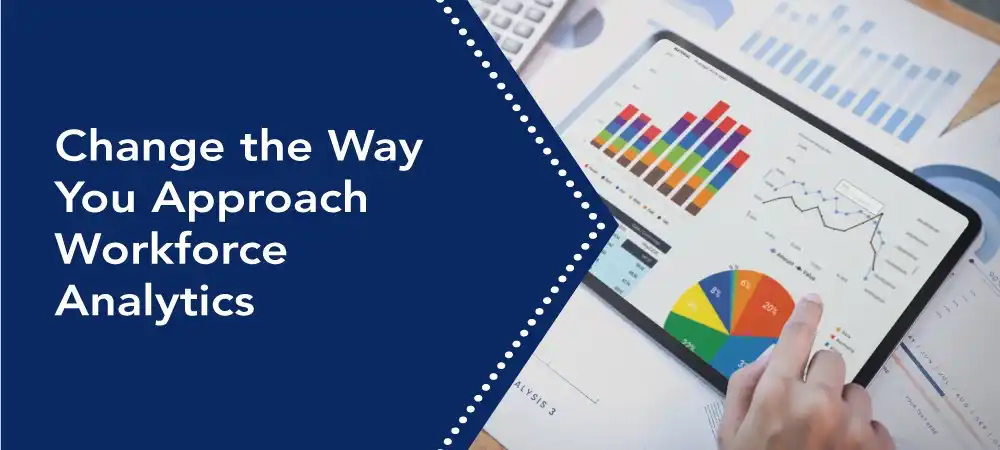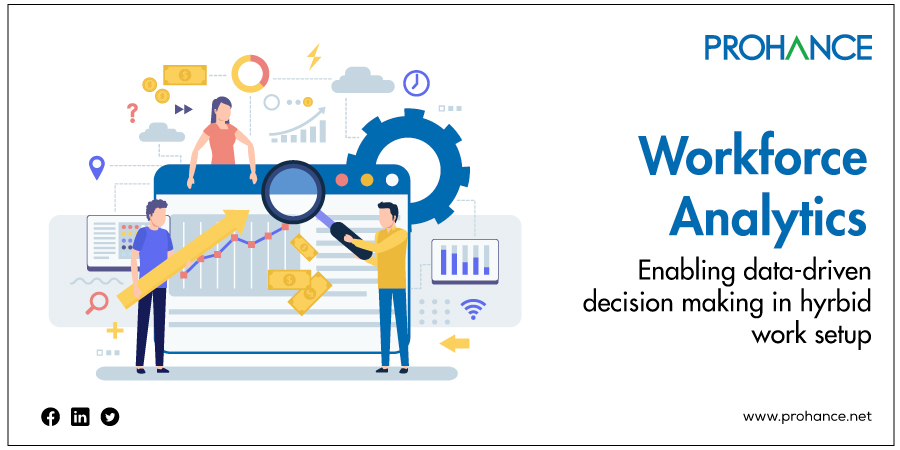Change the Way you Approach Workforce Analytics

Table of contents
- Benefits of Workplace Analytics
- What is Workforce Analytics?
- Benefits of Workforce Analytics
- 3.1. Hiring and talent management
- 3.2. Team performance
- 3.3. Employee experience
- 3.4. Employee leaves
- 3.5. Retaining employees
- 3.6. Team growth
- 3.7. Develop and deploy a project framework
- 3.8. Develop a project statement
- 3.9. Collect data
- 3.10. Evaluating KPIs
- 3.11. Create dashboards for workforce analytics
- 3.12. Optimize workforce planning
- 3.13. Enhance organizational performance
- Things to Remember Before Implementing Workforce Analytics
- Conclusion
Benefits of Workplace Analytics
Employee turnover is one of the biggest costs for any business. A high turnover rate can cost the company billions spent on looking for and training replacements.
Despite employee-friendly policies, like remote working, flexibility, and growth opportunities, employees are leaving companies and jobs. An employee engagement study shows that only 15% of employees are actually engaged at a job and 51% are actively looking for jobs. Millennials are particularly known to switch jobs, with 6 out of 10 being open to new job opportunities.
A sophisticated set of metrics and data analysis tools called workforce analytics is used to measure and enhance the performance of the entire workforce. In addition to conventional ratios such as time to fill, cost per hire, time to start, offer acceptance rate, accession rate, retention rate, add rate, and replacement rate, it evaluates hiring, staffing, training and development, personnel, compensation, and benefits.
If your business is in an industry with usually high retention rates and yet you’re noticing high attrition rates, it is important to determine the cause.

What is Workforce Analytics?
Software for workforce analytics is included in the broad category of people analytics, commonly referred to as HR analytics. People analytics is a wide word that covers all aspects of hiring and managing personnel, whereas workforce analytics is frequently more specifically focused on workforce-planning difficulties, even though the names are occasionally used interchangeably.
In today’s rapidly changing world, most organizations are turning to workforce analytics to help them arrive at an answer. By collecting and analyzing workforce data, organizations are getting insights into employee analytics, such as performance, skills and capabilities. Data is gathered from multiple sources, including employee surveys, performance metrics, employee monitoring software, etc. Also called HR analytics, this process provides companies with valuable insights on their workforce, and helps them make informed decisions about workforce planning, talent management, and the overall business strategy.
Read More: Best Ways to Effectively Manage A Remote Workforce
As with many other facets of HR, technology advancement that provides far more insight into employee data has caused a significant shift in the concepts behind workforce analytics. Below are some typical inquiries that HR professionals use workforce analytics data to address:
- Are we retaining our best employees?
- What traits do our best performers share?
- Who runs the danger of quitting?
- Which training has been the most successful?
- Where are the opportunities to reduce labor expenses?
- What Are the Uses of Workforce Analytics?
Benefits of Workforce Analytics
Hiring and talent management
The crucial indicators that HR teams use to monitor their aptitude and effectiveness in locating, attracting, and managing personnel are recruitment and talent management. To satisfy present and future hiring demands for in-demand skills, talent management metrics assist track supply and demand trends.
Team performance
Sales per employee, revenue per employee, and other qualitative data are examples of common metrics that may be used to monitor the efficiency of your employees based on productivity measurements and output.
Employee experience
This includes communications between applicants and a corporation from the outset of their interactions till they part ways. More productive and engaged employees are more likely to stay with the company for a longer amount of time when the working environment is favorable. You can find out how your employees feel about their employer through a variety of approaches, including employee surveys or performance evaluations.
Employee leaves
This extends past regularly scheduled and occasionally missed days and is also referred to as persistent absenteeism. Do any individuals or departments have a problem with absenteeism that is harming business results? This should be monitored and addressed as needed because it may have an impact on output and morale.
Retaining employees
The length of an employee’s tenure at your organization can be affected by hiring, training, and HR management tactics, which are all better understood through measuring employee retention. With high recruitment costs, decreased production from unfilled positions, and training costs, low retention can have a negative financial impact.
Team growth
These metrics are crucial workforce planning indicators that show how well onboarding, training, and upskilling work. The annual training hours, training spent per employee, and skill acquisition are all useful KPIs to track.
Develop and deploy a project framework
Ask questions about the expected business results and list the workforce issues the project will try to solve before putting a strong workforce analytics project into action. Doing this may win the backing of project stakeholders and executive sponsors.
Develop a project statement
Before obtaining and analyzing workforce data, use internal research, industry data, studies, and information from subject matter experts to develop a testable project statement.
Collect data
This stage entails selecting high-quality workforce data, establishing its applicability, and selecting the kind of data to gather. Do you use new data, for instance, or old data? Address any legal issues and match the project’s objectives with ethical standards for data privacy and security compliance. To acquire a holistic picture of workforce behavior, data sources should include accounting, customer relationship management, projects, and other areas in addition to HR sources.
Evaluating KPIs
Establish the aim as well as the workforce KPIs to monitor and assess. By helping identify skills gaps within their talent pool, workforce analytics can empower organizations to develop employee training programs that equip their employees with the necessary skills to improve their performance at work.
Create dashboards for workforce analytics
Create useful and interesting KPI groups and other visualizations for your decision-makers. With HR dashboards that show pertinent observations through real-time, interactive user-friendly visuals and quality workforce data, you may gain insightful knowledge about workforce management and planning.
Optimize workforce planning
Utilizing workforce analytics reports that make sense to project sponsors and implementation managers, interpret data, and make clear project recommendations. Make sure everyone is aware of who is in charge of the project’s conclusions and actionable results. The right data can help organizations not just understand their current needs but also predict future workforce requirements, thus empowering them with the right knowledge to plan ahead.
Enhance organizational performance
Workforce analytics can help identify areas for improvement and help organizations make data-driven decisions to increase employee productivity and engagement, improve organizational performance, and drive greater business success.
Read More: Workforce Productivity Analytics 101: The Ultimate Guide
Things to Remember Before Implementing Workforce Analytics
Here are four things to keep in mind while implementing workforce analytics in your organization:
Define your goals
What is the purpose of gathering data? It is important to identify and define your goals in order to collect and analyze relevant data. Goalposts can change as your organization grows and evolves. You must reassess your goals and make adjustments to your workforce analytics strategy accordingly.
Plan your strategy
Once you’ve identified your objective, it is important to carve out a strategy to maximize the benefits of your workforce analytics. Start by identifying key performance indicators (KPIs) that will help you achieve your organizational goals, and track them regularly. This will help you gain valuable insights and identify areas for improvement.
Leverage technology to your benefit
You have a host of technology tools that can help you achieve greater efficiency. Look for tools that can seamlessly integrate into your existing systems and are user-friendly too. Use predictive analysis and AI to enhance your strategic planning and achieve your future goals faster.
Clean your data
Update your systems and invest in data management tools and processes that ensure accurate, up-to-date and complete data. Ensure that there’s provision for cross-functional data to get clarity on all your business functions.
Conclusion
The future is already here, and with these techniques, you will be better equipped to predict future trends, get detailed insights about your workforce, and use the right tools to make data-driven decisions. Change the way you approach workforce analytics and give your business a competitive edge.



